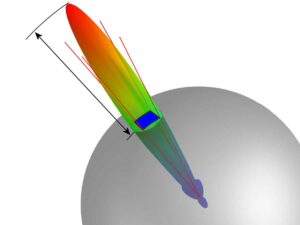Microwaves propagate through microwave circuits, components and devices, which act as a part of Microwave transmission lines, broadly called as Waveguides.
A hollow metallic tube of uniform cross-section for transmitting electromagnetic waves by successive reflections from the inner walls of the tube is called as a Waveguide The following figure shows an example of a waveguide.
A waveguide is generally preferred in microwave communications. Waveguide is a special form of transmission line, which is a hollow metal tube. Unlike a transmission line, a waveguide has no center conductor. The main characteristics of a Waveguide are −
- The tube wall provides distributed inductance.
- The empty space between the tube walls provide distributed capacitance.
- These are bulky and expensive.
Table of Contents
Advantages of Waveguides
Following are few advantages of Waveguides.
- Waveguides are easy to manufacture.
- They can handle very large power in kilowatts.
- Power loss is very negligible in waveguides.
- They offer very low loss low value of alpha−attenuation.
- When microwave energy travels through waveguide, it experiences lower losses than a coaxial cable.
Types of Waveguides
There are five types of waveguides.
- Rectangular waveguide
- Circular waveguide
- Elliptical waveguide
- Single-ridged waveguide
- Double-ridged waveguide
The following figures show the types of waveguides.
The types of waveguides shown above are hollow in the center and made up of copper walls.









